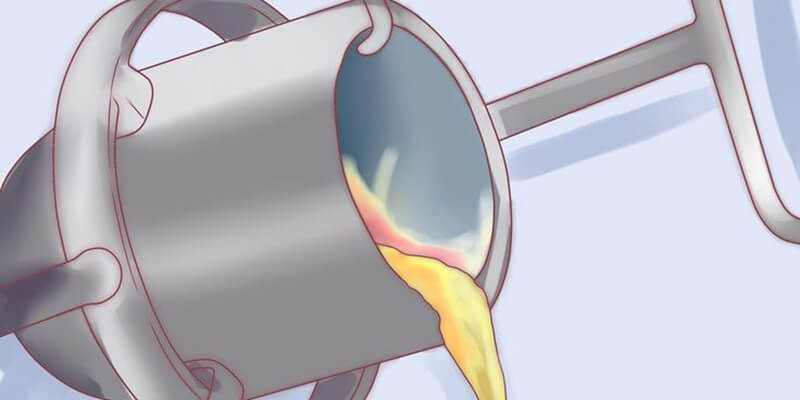
Metal casting processes are the main supplier of blanks and parts for the engineering industry. Each casting process in mechanical products represents a large proportion, for example, important parts (eight or nine) of internal combustion engines are castings that account for 70% to 90% of the total mass, the quality of castings in the car is responsible by 19%.
In our rapidly changing world, casting is the most widely used metal processing technology. Knowledge of metal casting is important no matter what industry you work in.
What is metal casting?
The metal casting process refers to the pouring of a molten metal into molds for metal casting. When the metallic liquid cools and solidifies, the raw part or parts of the process are obtained, called the metal casting process.
The history of the metal casting process is very long, which means that this metal casting process has been tested over a long period of time and is quite perfect and mature. Many metal casting products in our lives are made using this process. For example, car engine blocks, lamp posts, wind turbines, bicycle pedals, etc. Let's learn more about the metal casting process.
Metal Casting Process

Designing a pattern and making a metal casting mold
First you need to design a pattern to determine the shape of the mold, such as: B. a 3D printed model or a CNC prototype of the object. The mold can be made of wax, plastic, sand or even wood and must take into account the shrinkage that occurs as the metal cools, as well as the workability of the part's structure based on precise calculations. Finally, sprue holes are placed at appropriate locations in the mold to allow the molten metal to flow evenly and smoothly into the mold.
Selection of metal materials
The main alloys commonly used in casting are aluminum, solid metal, sheet metal, copper and, in the case of precious metals commonly used in the jewelry industry, gold, silver, copper and platinum. These metals are mechanically capable of meeting the requirements of metal foundries, they are a mixture of different elements, strong and durable.
Melting of metallic material
The metal casting process can be compared to playing on the beach and leaving footprints in the sand. Simply put, your feet are the model and the footprints are the shape of your feet.
The molding process is a multi-step process. This process involves placing the metal casting sand, sand and model into the sandbox and compressing the sandbox tightly so that the sand and model fit together perfectly. The objective is to form the geometry of the casting in the sand surrounding the model. The model is removed, the geometric features of the model are copied perfectly and this is how the shape is created. If a reusable mold is needed, a durable and indestructible metal mold can be made.
Pour into mold
Pouring or injecting heated molten metal into the mold. For example, gravity casting allows molten material to be poured directly into the mold by gravity. However, in pressure casting, the molten material can only passively enter the mold under high pressure. Furthermore, high closing forces are required to securely maintain the shape.
Remove mold
The most difficult part of this process is separating the sand from the clean, complete casting, a process we commonly call desanding. The mold is vibrated to shake off the metal casting sand adhered to the casting.
The shaken sand is then collected and cooled for recycling. The surface of the casting must not be covered with too much sand, as this will cause defects on the surface of the casting and will not promote full use of the sand.
Some companies with good conditions also use sand conditioners to remove and cool the sand, as well as evaporate the water vapor to speed up the process of separating the foundry sand. Some metals need to be quenched in water after solidifying because water helps remove mold. With reusable metal molds, castings are removed by automated ejector pins, leaving some ejector pin marks on the back of the casting.
Completion of metal casting
The metal casting project is cut and cleaned in the final step. During the cutting process, all mold material is removed from the object and the metal casting is ground and polished, for example by water cleaning to remove residual mold material, remove mold marks and rough raised edges.
Different Types of Metal Casting
Sand casting
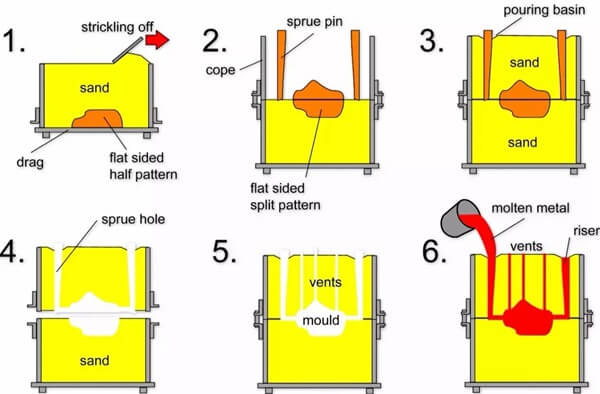
The sand casting process is very common and relatively simple because metal casting sand is particularly cheap and can also withstand heat. Once the process is complete, the surface sand will be easier to remove. However, the surface of sand casting is generally very rough. It is difficult to achieve high accuracy in dimensional tolerances.
Sand casting is most suitable for producing large and simple parts, such as: B. Street fences, iron pans commonly used in household or car engine parts. Therefore, sand casting is very useful in many ways.
Precision casting (lost wax casting process)
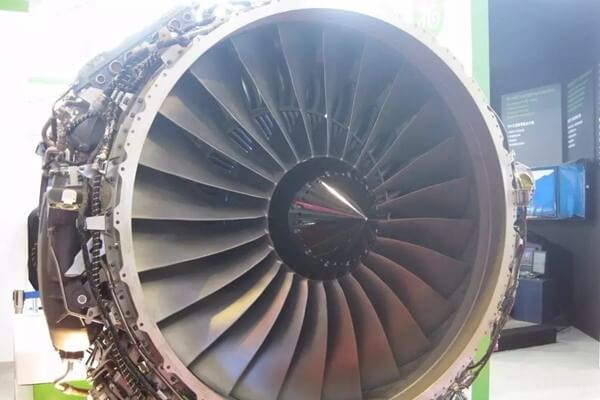
Lost wax casting is also called lost wax casting and is used to design all types of wax models. Furthermore, this method consists of covering and wrapping the outside of the wax model with fireproof material, then heating the model and letting the wax drain, so that a molded shell made of the same material resistant to high temperatures is obtained. than the wax mold. The molten metal is then injected into the mold and after cooling the solution, the metallic model is finished.
Vanishing mold casting
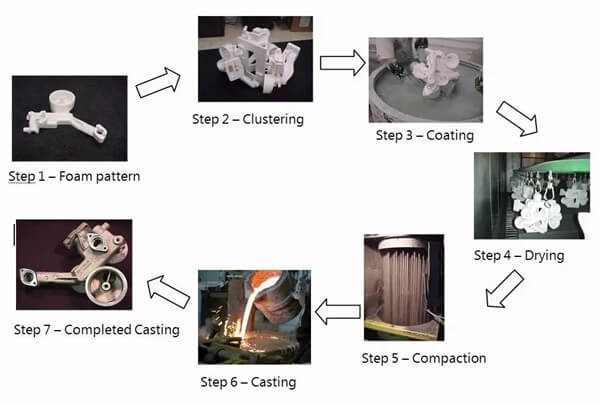
In disappearing shape molding, according to the process requirements, the bubble model is made first. The surface of the model is then coated with a special paint resistant to high temperatures and dried in a sandbox. It is then filled with dry sand according to the process requirements. Through three-dimensional vibration clamping, air is sucked in to pour the metallic liquid into a vacuum state. At this point, the model evaporated and was replaced by liquid metal. The bubble model is reproduced by the same foundry.
Centrifugal Casting
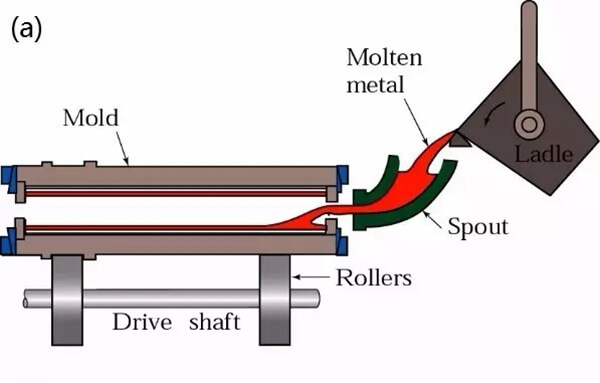
Centrifugal casting is the technology and method of injecting a metal solution into a rapidly rotating mold. The molten metal covers the entire mold under the action of strong centrifugal force and waits for the metal solution to cool down to form the casting. Because the effect of centrifugal force is very strong, the inclusions and gases inside the mold are easily discharged, and cooling generally occurs from the outside to the inside. The casting has a very fine structure and the mechanical properties are similar to those of the forging process.
cast
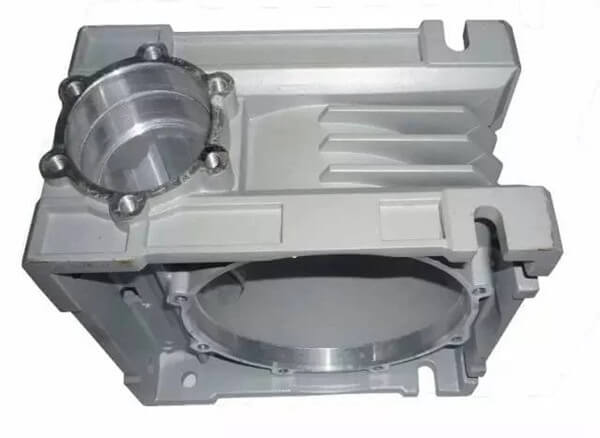
Metal die casting is most similar to plastic injection molding. First, two metal steel molds need to be prepared as cavities for the molten metal, then the molten metal is pressed into the cavities under high pressure, and then the beautiful works of art can be made. Metal castings generally have excellent surface finish, but the cost of custom cavities is higher, making this process more suitable for high-volume production because the metal cavities can be used multiple times.
Gravity Casting
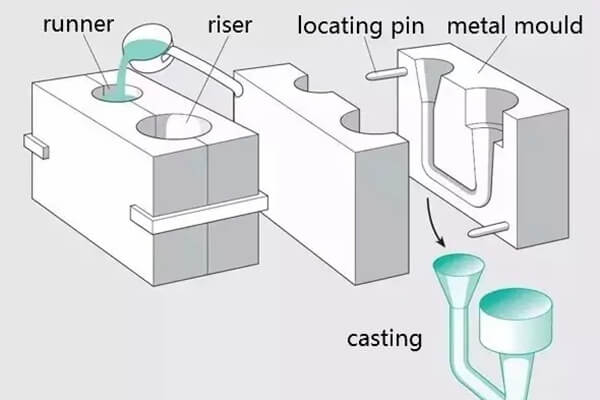
Gravity casting is older than other metal casting processes. It is a casting process in a reusable metal mold, also known as casting. As the name suggests, gravity casting uses gravity to move the metal solution from top to bottom to cover and fill the mold, rather than using pressure. This mold needs to be heated before casting and the material is generally made of iron, which has low thermal fatigue.
Other types of metal casting
There are several other metal casting processes, including pressure casting, lost wax casting, mud casting, hollow casting, vacuum casting, continuous casting, finished casting, and iron casting. Furthermore, all these casting processes are applicable to the same metal and also the same raw material.
Advantages and Disadvantages of Metal Casting
From the above-mentioned characteristics of various casting processes, the following advantages and disadvantages can be derived from metal casting.
Per
1. Any complex part shape can be produced, especially parts with complex internal cavity shape.
2. It is very adaptable, metal material is not limited, casting size is almost unlimited.
3. Wide range of manufacturing materials, high recovery rate, low equipment investment.
4. Excellent bearing quality, suitable for mass production and allows the production of thick-walled parts.
Disadvantages
1. The casting manufacturing process is more complicated and difficult to control. The surface finish may present defects such as porosity, shrinkage, slag holes, cracks, poor fusion, sand holes, etc.
2. Dimensions of castings are different and not as accurate as CNC machining.
3. Casting system is more dangerous for casters. The work environment is precarious, with high temperatures, dust and work intensity.
The application of metal casting
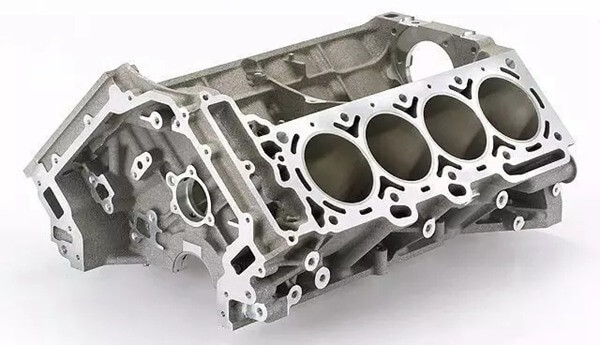
Power plant equipment
The plant's equipment is a high-tech product. Very stringent requirements are imposed on the reliability of the parts, as the parts must be operated continuously over a long period of time under high loads. Many parts of thermal power plant and nuclear power plant equipment also need to resist corrosion from high-temperature, high-pressure steam. Cast steel parts can meet these requirements at the highest level and are widely used in power plant equipment.
Locomotives and vehicles
Railway safety is of paramount importance, which is why some key components of locomotives and rolling stock, such as wheels, side frames, shock absorbers, hooks, etc., are traditionally made from steel castings.
Construction machines, construction vehicles and other vehicles
Most parts of construction and mechanical engineering machines are exposed to high loads or have to withstand impact wear. A large part of them are metal castings, such as: B. the active wheel in the action system, the support wheel, the rocker arm, the track plate, etc. In normal automobiles, steel castings are rarely used, but special off-road vehicles and heavy trucks also use many steel castings in the action part.
Concluding
Various metal casting processes have a wide range of applications in the manufacturing industry, particularly in construction and transportation. But these are also very profitable processes with a long history. After the test of history, metal casting services are increasingly available to meet different production needs.
Metal casting, cold casting, plaster molding, metal casting, shell molding and all other casting processes help the manufacturing industry to increase its productivity to a good level. The metal casting process explains its possibilities through the production of different shapes and metallic objects.

























































